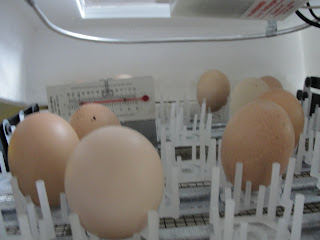You can find so many great books about birds at the local library. Our library has a book sale twice a year and I always find a book or two for the girls about chickens, chicks, hens or roosters. If you are thinking about raising chickens with your family, consider doing a little research beforehand like we did. Read some chicken-themed books together. There is no better way to spark interest and excitement than with a great book!
Since spring has sprung here in north-central Pennsylvania (and is feeling more like summer!), I wanted to share a fun recipe that we used for the evening's snack. It was very tasty! I highly recommend substituting the Kashi brand cereal because it tastes incredible! How much fun would this be to make for a spring birthday celebration or Easter party? It's so easy that it would make a great afternoon snack for your little bird lovers. I adapted this recipe slightly from the blog The Adventures of Bear.
1/4 cup coconut
1 tablespoon brown sugar
1/4 cup melted butter
grapes
muffin liners
Directions:
Crumble the shredded wheat biscuits into a mixing bowl. Use a spoon to stir in the coconut and brown sugar. Pour the melted butter over the shredded wheat mixture and mix together. Line muffin tin with liners. Press the shredded wheat mixture into the lined cups. Bake in a 350 degree oven for 10-15 minutes until crisp and golden brown. Let cool. Remove from muffin tin and fill the nests with grapes as eggs. Makes roughly six nests. Enjoy!
Crumble the shredded wheat biscuits into a mixing bowl. Use a spoon to stir in the coconut and brown sugar. Pour the melted butter over the shredded wheat mixture and mix together. Line muffin tin with liners. Press the shredded wheat mixture into the lined cups. Bake in a 350 degree oven for 10-15 minutes until crisp and golden brown. Let cool. Remove from muffin tin and fill the nests with grapes as eggs. Makes roughly six nests. Enjoy!



















